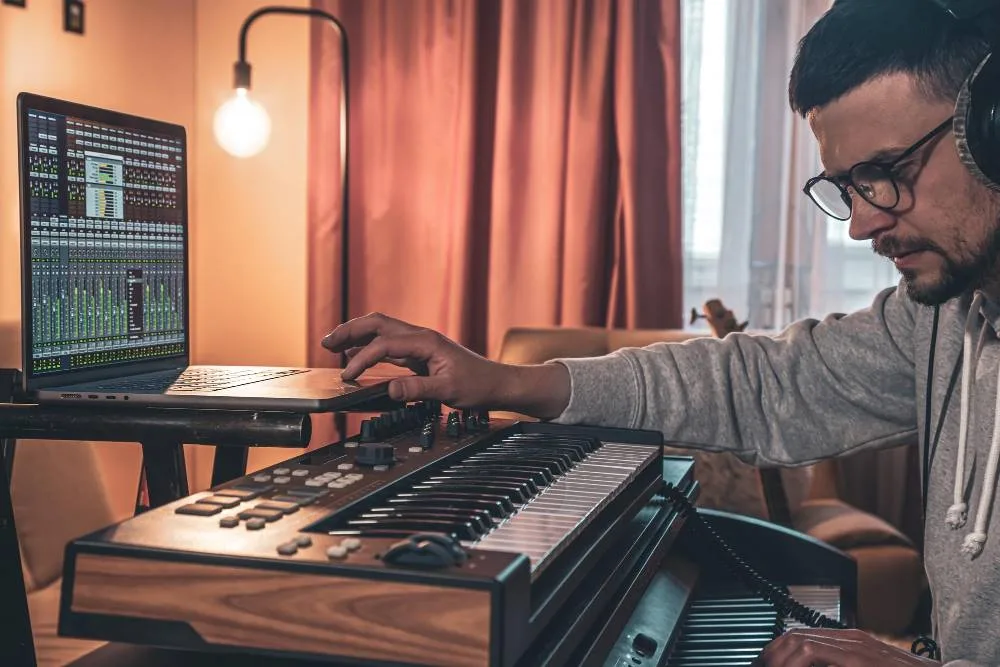Software for musicians empower them with the tools they need to amplify their creativity and reach new heights in their art. From music production to live performances, these music software solutions play a pivotal role in shaping the modern musical landscape
In this article, we will share Top 3 Music Software For Production, Recording, Composition and live music
Top 3 Music Production Software:
Ableton Live:
Known for its flexibility, Ableton Live has an easy-to-use interface, live features like recording and a unique Session View which is popular among electronic music producers.
FL Studio:
This music software is considered for its simplicity interface, FL Studio is a DAW that helps elaborate arrangements through the step sequencer and pattern-based workflow.
Logic Pro X:
Logic Pro X by Apple is distinguished with its huge virtual instrument and effect library that musicians can get as a part of the package, allowing them to use this toolset for music production.
Top 3 Music Recording Software:
Pro Tools:
Pro Tools is a professional standard in recording studios that provides full range of capabilities for recording, editing, and mixing thereby ensuring quality results.
Studio One:
Studio One software has many features, it is user-friendly interface makes musicians able to record, mix and arrange music easily.
Cubase:
Steinberg’s Cubase, a record software that is available for musicians, producers and composers, allows sophisticated features to ensure flawless recording.

Top 3 Software for Music Composition:
Sibelius:
Sibelius is a powerful software used for music composition, which offers advanced tools related to professional-level notation and helps in the development of elaborate musical scores.
Dorico:
Dorico by Steinberg is a powerful composition software with advanced scoring panel which attracts many composers to work with it and especially for the ones who create unique projects.
Musescore:
It provides a free, open source platform for creating and sharing scores and musical compositions.

Top 3 Software for Live Music Performance:
MainStage:
Main Stage, by Apple turns Mac computers into live performance monsters that work with Logic Pro X instruments and effects to create a vivid onstage environment.
Ableton Live:
It is not only used for production and manufacturing, but Ableton Live is also the first option for live performances as it has a flexible set of features such as triggering loops, effects, etc., to create dynamic sets.
Bitwig Studio:
Working in real-time, modularity extends to live performances through Bitwig Studio: musicians can adjust and change their compositions on the stage.

Top 3 Music Arranger Software:
GarageBand:
A Apple’s easy-to-use software, GarageBand provides user with basic music arranging tools for the reasons that it is perfect for beginners and hobbyists.
Bitwig Studio:
Bitwig Studio creates a flexible and modular platform for music to create which enables the musicians to explore various sounds and compositions.
PreSonus Notion:
Notion by PreSonus is designed for composers and comes with advanced music arrangement and notation, suitable for all types of musical genres.
The choices range from critically acclaimed music production software such as Ableton Live and FL Studio to mainstream recording solutions like Pro Tools and Studio One that are suitable for musicians of all levels.
There are others who focus on music arrangement, and they will prefer working with GarageBand and Bitwig Studio because of the simplicity involved in the operations; advanced composers need detailed notation that can be attained through Sibelius, Dorico or Musescore. In terms of live performances, MainStage and Ableton Live work together perfectly with exceptional sets that keep the crowd entertained.
With the advancement in music software technology, the horizon of creativity only becomes wider allowing musicians to open new avenues for creativity. Musicians can invent, produce recordings and give concerts while influencing their artistic image in ways that were previously thought




